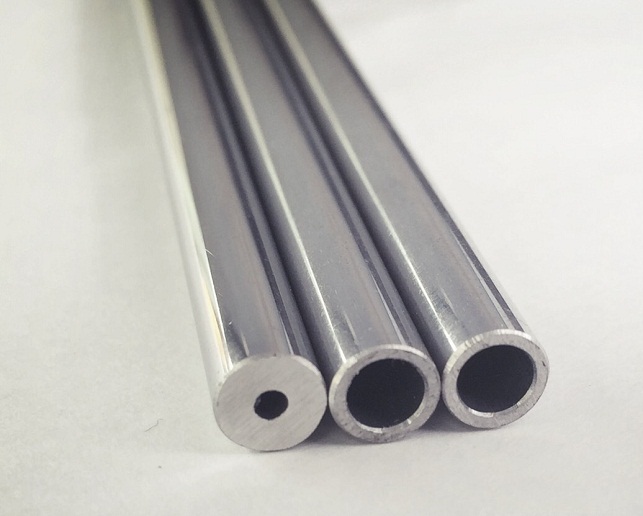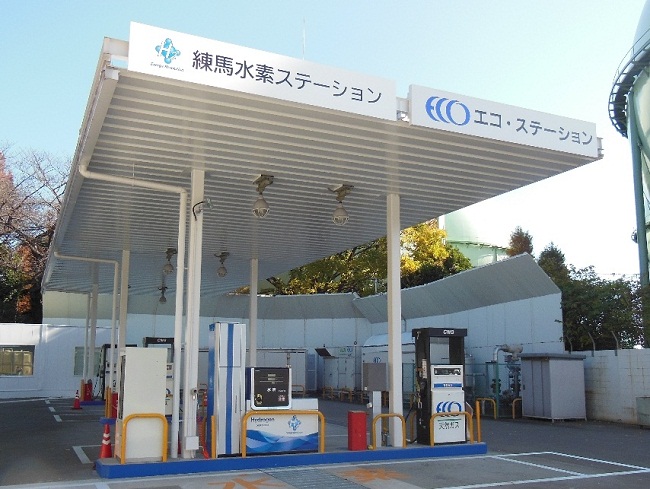New stainless steel, HRX19TM, for high-pressure hydrogen environments has been developed and exhibited for the first time at the International Hydrogen & Fuel Cell Expo
Jan. 20, 2015
Nippon Steel & Sumitomo Metal Corporation
Nippon Steel & Sumikin Stainless Steel Pipe Co., Ltd.
New stainless steel, HRX19TM, for high-pressure hydrogen environments
has been
developed and exhibited for the first time
at the International Hydrogen & Fuel Cell Expo
Nippon Steel & Sumitomo Metal Corporation has developed the new stainless steel, HRX19TM, for use in high pressure hydrogen environments and launched the sales in combination with Nippon Steel & Sumikin Stainless Steel Pipe Co., Ltd. (NSSMC and NSSP). HRX19TM has already been used for heat exchangers, joints and valves of commercial-use hydrogen stations.
HRX19TM will be shown to the specialists and the public for the first time at the 11th International Hydrogen & Fuel Cell Expo, to be held at the Tokyo Big Sight on February 25-27, 2015.
This is a high-strength austenitic stainless steel and is manufactured under conditions of full integration from raw materials procurement to final processing, enabling NSSMC to guarantee quality.
HRX19TM has three distinctive features: (1) excellent resistance to hydrogen gas embrittlement, (2) high strength, and (3) excellent weldability. This steel can contribute to reduction of costs and the improvement of maintainability and safety in constructing hydrogen stations.
(1) Excellent resistance to hydrogen gas embrittlement
HRX19TM has a level of additive nickel similar to that of conventional Type316L, and amounts of manganese and chromium, which are cheaper elements than nickel, that raise the Ni equivalent (This is a measure of hydrogen resistance; see Note 1. The Ni equivalent of 32.09% or more is guaranteed.) to one of the highest levels achieved in austenitic stainless steel. This contributes to lengthen piping life in the stations and improve safety.
(2) High strength
HRX19TM is about twice as strong as Type316L, the conventional material for use in high-pressure hydrogen environments. This means that it enables stations can be designed with thinner walls and for pipes to be made greater inside diameters, resulting in larger capacity and shorter hydrogen filling time.
(3) Excellent weldability
The conventional Type316L tubes have been connected with a joint and valves, requiring hundreds of joints for one station. It also requires many processes. In contrast, thanks to superior weldability, HRX19TM can be welded and the weld can have the same level of high strength and hydrogen gas embrittlement resistance as the welded metal. This means that specifying HRX19TM contributes to reduce use of joints and valves, makes threaded part thinner, and lower maintenance costs.
HRX19TM has already been adopted for commercial hydrogen stations constructed by Iwatani Corporation, Tokyo Gas Co., Ltd., and other companies in Japan. The outlook is for future increase in practical use of hydrogen energy, and NSSMC and NSSP are looking forward to contributing to that change.
*1. Ni equivalent (mass %) = 12.6%C +0.35%Si + 1.05%Mn + 1.0%Ni + 0.65%Cr + 0.98%Mo
▼ For details about the 11th International Hydrogen & Fuel Cell Expo see its website
http://www.fcexpo.jp/To-Exhibit/Merit/

(Photo 1: Products made of Type316L (left) and HRX19TM (right))

(Photo 2: A hydrogen station (from the website of Tokyo Gas)


